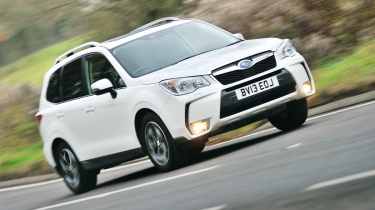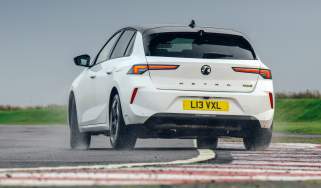Subaru Forester 2.0 XT review, price and pictures
Can the Forester return to being the thinking driver’s SUV of choice?
What is it?
The new Subaru Forester, driven here in its most powerful 2.0 turbo guise. Not that long ago Subaru Forester was evo’s favourite SUV. It was all the things that 99 per cent of this breed are not: utilitarian, understated, characterful, compact, relatively light and enjoyable to drive. We even had one – the Japan-only STI version – on Car of the Year in 2005. This new, fourth-generation version has a lot to live up to, then. Especially as it’s bigger, heavier and much more conventional than those that have gone before.
The Forester has never been a looker (it is a Subaru, after all), but it was distinctive and trod its own path… The new model could be any slightly gawky mid-sized SUV. Not a great start. At least the 2-litre boxer engine is sacred.
Technical highlights
There are three engine options, all horizontally opposed fours: a 2-litre turbocharged diesel with 145bhp and 258lb ft from £24,995, a 2-litre normally aspirated petrol with 148bhp and 146lb ft from £25,495, and the range-topping turbocharged petrol with 237bhp and 258lb ft from £30,995. As if to highlight the Forester’s unique attributes, that most powerful petrol engine is set to make up more than 25 per cent of total sales.
More reviews
Heart-warmed by this news, I should say there are disadvantages to the 2.0 DIT (direct injection turbo) XT model we’re driving. It might be powered by the good stuff but it’s slightly hobbled by another acronym that is enough to make any enthusiast let out an involuntary groan: CVT. Yes, a braying, slow-witted and heinous continuously variable transmission, albeit with paddle-shifters if you want to flick between six pre-determined ratios – or eight in the most aggressive S# mode. The CVT ’box also marks a change from the lowlier six-speed manual car’s 50:50 torque split to a less-appealing-sounding 60:40 front/rear split.
What’s it like to drive?
On the move, the CVT ’box is predictably horrid, sitting at constant rpm when you floor the throttle, for example. Fortunately the engine is pretty refined, but you’d never know it was a flat-four, as it emits a thin, tuneless note and only feels 237bhp-strong when worked really hard. Things are slightly better in S#, but even with eight tightly spaced ratios to play with, the performance feels lukewarm and the shifts are blurred rather than crisply defined.
Dynamically, there’s some Forester DNA intact here – the suppleness, the noticeable but ultimately controlled body roll and the lucid sense of weight transfer that it brings, the light but accurate steering and the feeling that this is an SUV that’s about more than just tied-down grip and blunderbuss performance. Sadly, the balance is rather option-free understeery in the end, despite the promise of an electronically controlled multi-plate transfer that can apportion more power to the rear wheels.
Inside, the Forester is no Evoque. For some people that will be A Very Bad Thing but I’m rather glad that it retains some of the utilitarian feel. The plastics are a bit shiny and hard, the rubber floor mats look like they could be hosed down and overall the Forester exudes a simple toughness. Or a cheap ugliness, depending on your point of view. What is indisputably terrific is the view out of the vast windscreen and the relatively slim A-pillars. It’s like the McLaren 12C philosophy scaled up to IMAX and it is some compensation for the Forester’s swelling girth when threading along narrow lanes.
How does it compare?
Overall this bigger, more mainstream Forester lacks the agility, balance and unique appeal of some of its predecessors. Without those ingredients it becomes just another SUV and must woo buyers with fuzzy things like badge appeal, interior inventiveness and perceived quality. Needless to say, it won’t be setting the sales charts alight. Your local farmer might be a bit grumpier than usual, too.
Specifications
| Engine | Flat-four, 1998cc, turbo |
| Max power | 237bhp @ 5600rpm |
| Max torque | 258lb ft @ 2400-3600rpm |
| 0-60 | 7.5sec (claimed) |
| Top speed | 137mph (claimed) |
| On sale | Now |




